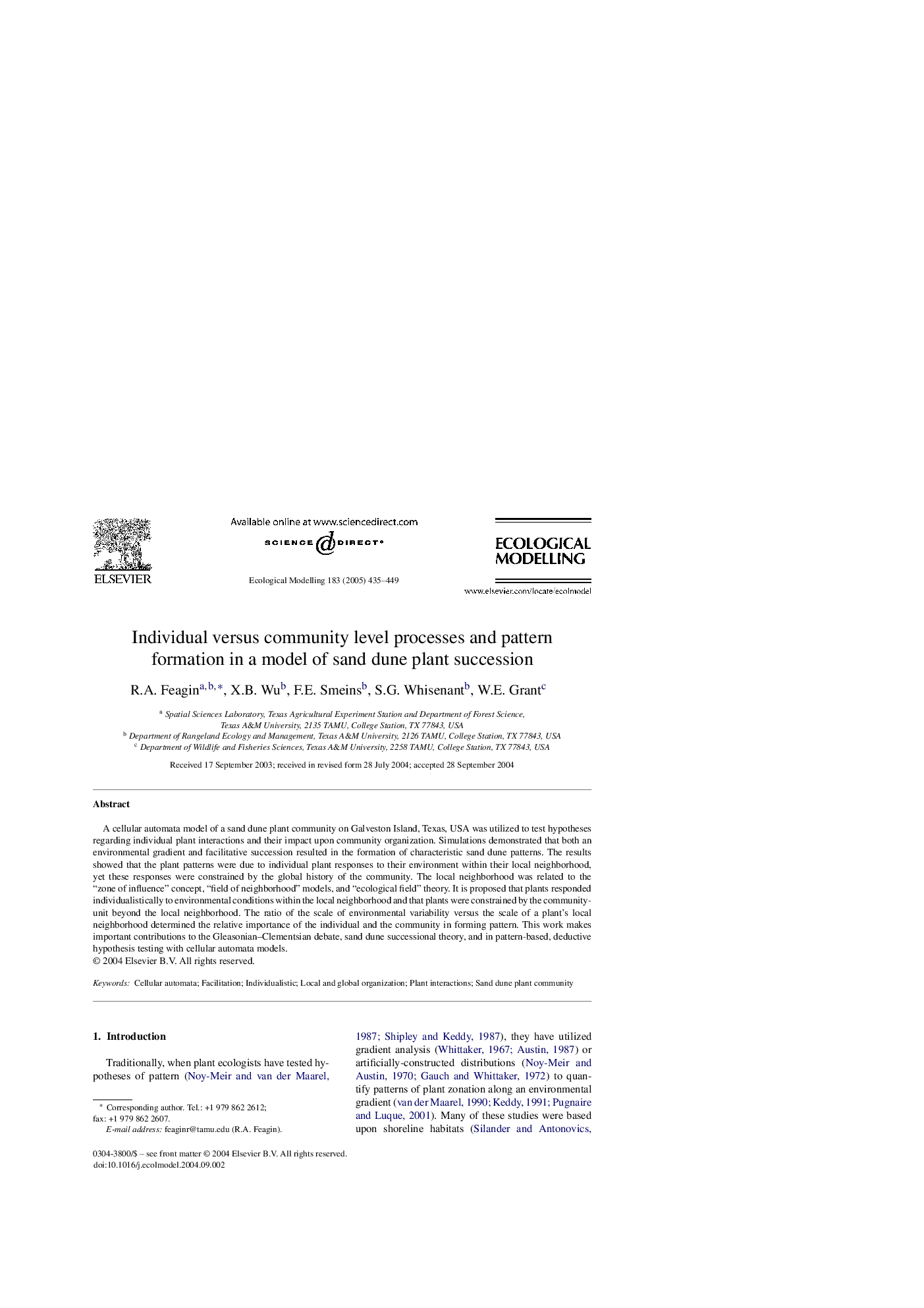| Article ID | Journal | Published Year | Pages | File Type |
|---|---|---|---|---|
| 9443557 | Ecological Modelling | 2005 | 15 Pages |
Abstract
A cellular automata model of a sand dune plant community on Galveston Island, Texas, USA was utilized to test hypotheses regarding individual plant interactions and their impact upon community organization. Simulations demonstrated that both an environmental gradient and facilitative succession resulted in the formation of characteristic sand dune patterns. The results showed that the plant patterns were due to individual plant responses to their environment within their local neighborhood, yet these responses were constrained by the global history of the community. The local neighborhood was related to the “zone of influence” concept, “field of neighborhood” models, and “ecological field” theory. It is proposed that plants responded individualistically to environmental conditions within the local neighborhood and that plants were constrained by the community-unit beyond the local neighborhood. The ratio of the scale of environmental variability versus the scale of a plant's local neighborhood determined the relative importance of the individual and the community in forming pattern. This work makes important contributions to the Gleasonian-Clementsian debate, sand dune successional theory, and in pattern-based, deductive hypothesis testing with cellular automata models.
Related Topics
Life Sciences
Agricultural and Biological Sciences
Ecology, Evolution, Behavior and Systematics
Authors
R.A. Feagin, X.B. Wu, F.E. Smeins, S.G. Whisenant, W.E. Grant,
